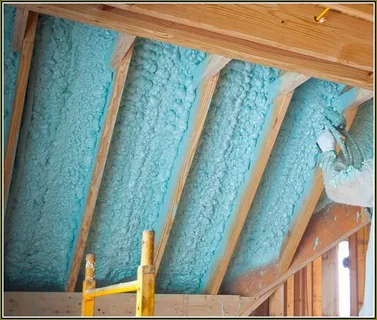Unsaturated Polyester Resin Production Process

The Unsaturated Polyester Resin Production Process with Cost Analysis is essential for understanding the complexities and financial aspects of producing this versatile material. Unsaturated polyester resin (UPR) is widely used in various industries, including automotive, marine, construction, and consumer goods. This report delves into the production process, procurement resource assessment, market drivers, raw material requirements, costs, key process information, and the benefits of obtaining a detailed and personalized report to enhance your business operations.
Request Free Sample – https://www.procurementresource.com/production-cost-report-store/unsaturated-polyester-resin/request-sample
Procurement Resource Assessment for Unsaturated Polyester Resin Production Process
Procurement resource assessment is a crucial step in the unsaturated polyester resin production process. It involves evaluating the availability, quality, and cost of the raw materials required for production, ensuring the process is efficient, cost-effective, and sustainable.
Steps in Procurement Resource Assessment:
- Identifying Suppliers: The first step is to identify reliable suppliers of key raw materials such as maleic anhydride, phthalic anhydride, ethylene glycol, and styrene. This includes evaluating the suppliers’ reliability, consistency in quality, and capacity to meet demand.
- Quality Evaluation: Assessing the quality of raw materials is crucial. The materials should meet specific standards to ensure the production of high-quality unsaturated polyester resin.
- Cost Analysis: Analyzing the costs associated with procuring raw materials, including transportation, storage, and any additional processing required before resin production.
- Sustainability Considerations: Evaluating the environmental impact of the procurement process and ensuring that it aligns with sustainability goals and regulatory requirements.
Understanding Unsaturated Polyester Resin
Unsaturated polyester resin (UPR) is a thermosetting polymer formed by the reaction of diols (glycols) with saturated and unsaturated dicarboxylic acids or anhydrides. UPR is used in a wide range of applications due to its excellent mechanical properties, chemical resistance, and ease of processing.
The Unsaturated Polyester Resin Production Process:
- Esterification Reaction: The production process begins with the esterification of dicarboxylic acids or anhydrides (such as maleic anhydride and phthalic anhydride) with diols (such as ethylene glycol). This reaction forms the polyester backbone and releases water as a by-product.
- Polycondensation: The esterification reaction is followed by polycondensation, where the polyester chains grow longer, forming a high-molecular-weight polymer. This step requires precise temperature control to avoid premature gelation.
- Addition of Styrene: The unsaturated polyester is then dissolved in styrene monomer to lower the viscosity and enable easy handling and processing. Styrene also acts as a crosslinking agent during the curing process.
- Formulation and Additives: The UPR formulation can be modified by adding fillers, pigments, catalysts, and other additives to enhance specific properties such as toughness, UV resistance, and fire retardancy.
- Curing: The final step involves curing the UPR. This is typically done using initiators such as organic peroxides, which trigger a free-radical polymerization, resulting in a hard, thermoset material.
Market Drivers for Unsaturated Polyester Resin
Several factors drive the market demand for unsaturated polyester resin, including:
- Growing Automotive Industry: The increasing demand for lightweight and durable materials in the automotive industry drives the need for UPR, which is used in components like body panels, bumpers, and interior parts.
- Construction and Infrastructure Development: UPR is widely used in construction applications such as pipes, tanks, and composite panels due to its high strength and corrosion resistance.
- Marine and Aerospace Sectors: The marine and aerospace industries require materials that can withstand harsh environments, making UPR an ideal choice for components like boat hulls and aircraft parts.
- Consumer Goods and Electronics: UPR is used in a variety of consumer goods, including furniture, appliances, and electrical housings, due to its versatility and excellent finish.
Raw Material Requirements for Unsaturated Polyester Resin Production
The primary raw materials required for producing unsaturated polyester resin include:
- Maleic Anhydride: A key ingredient that provides the unsaturated sites necessary for crosslinking during the curing process.
- Phthalic Anhydride: Used to enhance the rigidity and chemical resistance of the resin.
- Ethylene Glycol: A common diol used in the esterification reaction to form the polyester backbone.
- Styrene Monomer: Acts as a solvent to reduce viscosity and a crosslinking agent during curing.
- Additives: Various additives such as fillers, pigments, and catalysts are used to modify and enhance the properties of the final UPR product.
Costs and Key Process Information for Unsaturated Polyester Resin Production
The production of unsaturated polyester resin involves several costs and key process steps:
- Procurement Costs: These include the costs of sourcing and transporting raw materials like maleic anhydride, phthalic anhydride, ethylene glycol, and styrene from suppliers to the production facility.
- Production Costs: Expenses related to the production process, including energy costs, labor, and maintenance of production equipment. The cost varies depending on the production scale and efficiency.
- Capital Costs: The cost of setting up UPR production plants, including the installation of reactors, distillation columns, and other necessary infrastructure.
- Operational Costs: Ongoing expenses for running the production facility, including utilities, labor, maintenance, and regulatory compliance.
Key process information includes:
- Reaction Control: The esterification and polycondensation reactions must be carefully controlled to achieve the desired molecular weight and properties of the polyester resin.
- Temperature Management: Precise temperature control is essential during the production process to prevent premature gelation and ensure consistent product quality.
- Formulation Flexibility: The ability to adjust formulations by adding various additives allows manufacturers to produce a wide range of UPR products tailored to specific applications.
- Quality Control: Implementing stringent quality control measures ensures that the produced UPR meets industry standards and specifications.
Looking for an Exhaustive and Personalized Report?
If you are looking for an exhaustive and personalized report that could significantly substantiate your business, it’s essential to understand the various aspects of the unsaturated polyester resin production process. A detailed and customized report can provide you with in-depth insights into the procurement process, production costs, market trends, and potential opportunities for optimization.
Conclusion
The unsaturated polyester resin production process is a complex and essential component of the automotive, construction, marine, aerospace, and consumer goods industries. By understanding the intricacies of the production process, procurement resource assessment, market drivers, raw material requirements, and associated costs, stakeholders can make informed decisions and optimize their operations. For a more detailed and personalized report, consider engaging with industry experts who can provide tailored insights and recommendations to enhance your business strategy.
About Us:
Procurement Resource is an invaluable partner for businesses seeking comprehensive market research and strategic insights across a spectrum of industries. With a repository of over 500 chemicals, commodities, and utilities, updated regularly, they offer a cost-effective solution for diverse procurement needs. Their team of seasoned analysts conducts thorough research, delivering clients with up-to-date market reports, cost models, price analysis, and category insights.
By tracking prices and production costs across various goods and commodities, Procurement Resource ensures clients receive the latest and most reliable data. Collaborating with procurement teams across industries, they provide real-time facts and pioneering practices to streamline procurement processes and enable informed decision-making. Procurement Resource empowers clients to navigate complex supply chains, understand industry trends, and develop strategies for sustainable growth.
Contact Us:
Company Name: Procurement Resource
Contact Person: Amanda Williams
Email: sales@procurementresource.com
Toll-Free Number: USA Canada – Phone no: +1 307 363 1045 | UK – Phone no: +44 7537 132103 | Asia-Pacific (APAC) – Phone no: +91 1203185500
Address: 30 North Gould Street, Sheridan, WY 82801, USA




